Soccermatics: The stats behind executing the perfect penalty
David Sumpter looks into why the Germans were so uncharacteristic against Italy in their quarter-final penalty shootout - and the maths behind scoring an unstoppable spot kick
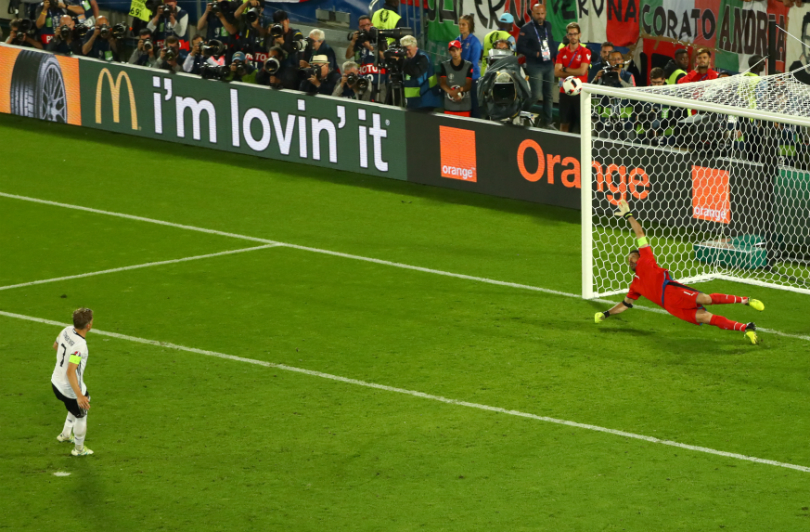
Out of ten delegated penalty takers in the Germany - Italy penalty shootout, six failed to score. Four of them - Mesut Özil, Bastian Schweinsteiger, Graziano Pellè and Simone Zaza - missed the target or hit the woodwork.
And they aren’t the only world-class players who have been unable to score from the spot in recent weeks. Lionel Messi shooting over the bar in the Copa America and Cristiano Ronaldo hitting the post against Austria shows that even the very best players can miss.
So, how can these highly trained professionals fail to place the ball between a goal 7.29m wide from a distance of 11m?
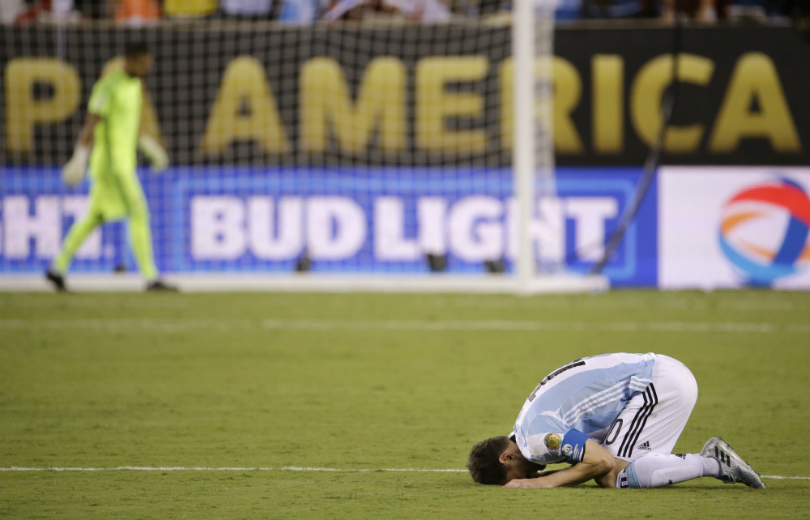
Psychological factor
While psychology might well play a part in penalty taking, it is not the whole story.
Usually, player’s nerves are used to explain the misses. Penalty taking, especially in shootouts, is said to be less about technical ability and more about staying focussed. The players shouldn’t let the occasion get to them. They should remain calm and be decisive.
While psychology might well play a part in penalty taking, it is not the whole story. To find out more we need to look more closely at penalty taking: to understand how to take a perfect penalty.
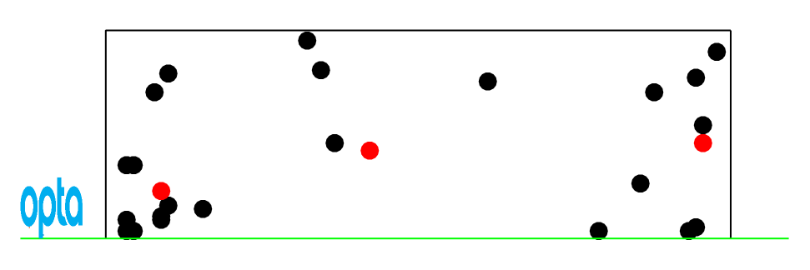
The plot below shows the position of all of the penalty shots in the Euros before the Germany-Italy game. It includes both those in penalty shootouts and those awarded during the game.
The best features, fun and footballing quizzes, straight to your inbox every week.
There were 23 goals and 3 saves. There have also been 3 misses. Ronaldo hit the post against Austria, as did Aleksander Dragovic against Iceland. Granit Xhaka sent the ball wide in Switzerland’s shootout against Poland.
Successful penalties are typically very close to the edge of the goal: near to either the posts and/or the corners. Successful penalties are about finding the extremes.
While it is clear that placing a penalty further way from a keeper is more likely to result in a goal, what is surprising is just how difficult a penalty shot towards the posts or in the top of the goal is to save. Below is a plot of how the probability of scoring depends upon where the shot arrives at the goalmouth.

White shows areas where the probability of scoring is close to 100%, black areas are close to 50%, and the other shading are in between.
This plot is based on all the penalties taken during the last two seasons in the Champions League, Premier League, La Liga and Bundesliga. That is a total of 680 penalties, including those in penalty shootouts as well as in-game. Overall 76% of penalties are successful, but it is those that are placed at extremes that are most likely to go in.
Reaching the unreachable
So far in the Euro’s, Lewandowski has the best claim to have taken the perfect penalty. He placed his shootout penalty against Switzerland in the top-right hand corner, well beyond the reach of goalkeeper, Yann Sommer.
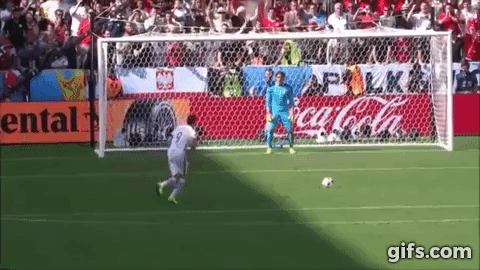
A penalty like this is practically unsaveable, with the model estimating a one in a ten thousand probability of a save.
In their quarter-final against Italy, the German penalties were far from perfect. Thomas Muller’s shot was too close to the area where keepers can make saves and Buffon saved it. Hector’s effort was in the same place, and he can count himself lucky that it went just under Buffon’s arm.
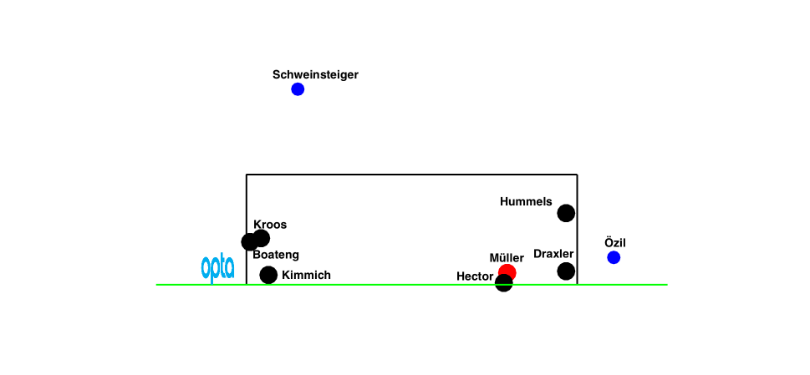
Then there is Bastian Schweinsteiger, who missed the target completely and Mesut Özil, who hit the post. These misses could well be attributed to nerves. But the penalty model offers another part of the explanation.
The model shows that the perfect penalty involves finding the extremes of the goal - near the posts or just underneath the bar. It was these extremes that Özil and Schweinsteiger were shooting at.
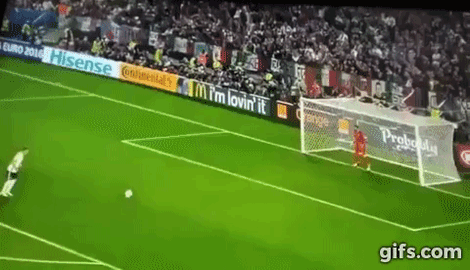
Earlier in the tournament, Özil’s penalty against Slovakia was saved. That penalty was placed near the post, to the keeper’s left. Against Italy, Özil decided to send the ball just a bit further out, and ended up missing the target.
Schweinsteiger’s blast over the bar was aimed in the roof of the net, an unstoppable penalty if it had come off. It looks bad when it fails, but had it worked out, Buffon wouldn’t have had a chance.
There is no denying the emotions of a penalty shootout. Messi’s reaction to sending the ball over the bar in Copa America is proof of this point. But the search for the perfect penalty lets us to see such misses in a new light. Chris Waddle’s miss in the World Cup 1990 was only inches away from being a perfect top left.
In future shootouts we will undoubtedly see more failed attempts to find a spot that is guaranteed to beat the keeper. These shouldn’t be put down solely to nerves, but we should also understand them as part of the search for the perfect penalty.
Additional data analysis by Martin Sutton (@stats4footy)

